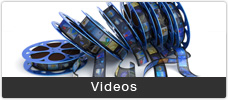Case Studies
Martin Stranka - My Life with EIZO | EIZO

"Work life" was intentionally omitted from the title. I once heard somewhere, that if you do what you love, you never have to work a day in your life. Of course, this is an exaggeration, but an interesting one to say the least. I do not take for granted that I have the opportunity of spending life doing things I am passionate about.
But let's go all the way back to the start. My name is Martin Stranka. I'm 33 years old and I have been working the camera for 11 years and counting. It's those significant life-changing moments that you remember. After experiencing an unexpected tragedy 11 years ago, I sought to rebalance my life and find a purpose. Only one thing came to mind. Take all of my student savings and purchase my first DSLR camera. Eleven years flew by like nothing. I am grateful for the opportunity to exhibit my photos at over a hundred exhibitions around the world including cities such as Miami, Prague, or Shanghai. At the same time, I managed to win over 80 international photography awards. The journey was, and still is, beautiful. But I came to realize that the road to success requires believing in yourself, surrounding yourself with people that believe in you, and whom you believe in. At the end of 2017, I found a true partner after beginning cooperation with EIZO. Being a global ambassador is an offer I could not resist, specifically because it was their monitors that were my daily bread for so many years.
MY FIRST AND SECOND EIZO
As an up and coming photographer, I was processing photos on TN panels, which were far from the true image. With every slight seat adjustment on my chair and change of angle, the photo on the monitor dissipated into various colours and, in some extreme cases, it was as if I were looking at the negative. Time progressed and along came IPS displays for home use, which more than an evolution, really delivered a revolution. My hobby slowly transitioned into my bread-and-butter, and with it grew my demands. Five years ago, I purchased my first IPS monitor, the EIZO EV2736. I am well aware of the fact that this model series is designed for offices, but you have to start somewhere. Yet the display quality, and particularly the transition to a 27" panel size, was substantial and made a huge difference. The ergonomics and standard RGB gamma correction was fantastic, and exactly what I imagined it to be. However, when processing photos, there was definitely room for improvement in terms of even backlighting. I got to know the other EIZO professional model series as well. And so I knew that one day, I would have a superb product without any of these downsides.
With the increasing number of exhibitions throughout the world and higher demand for quality picture, it did not take long to purchase a second monitor for my desk, the EIZO CS270. I stayed true to the 27" panel size, which was all I needed for my 22 megapixel photos. Finally, I could take advantage of homogeneous backlighting (DUE), and so I was no longer afraid of making mistakes in making local changes to photos. I was one step closer to having greater control over my work. There is nothing more frustrating than working long hours, days, or even weeks on photographs, only to find that your monitor is simply unbalanced, meaning that especially corners and edges are not lit properly. Factory settings for the monitor alone are outstanding. There is no need for anyone to read long manuals or instructions regarding configuration. Pre-calibrated modes satisfied all of my needs for a long time. That is up until I started cooperating with EIZO directly and had the opportunity to work with their 31" flagship CG318-4K monitor. I was glad the new addition to my setup, the 4K monitor, would not be some kind of forced product placement effort, but a true result of my long-term personal experience and trust in the brand. And so I was ecstatic about using a monitor like no other in the comfort of my own home. In the following several rows, I would like to summarize my half-year experience with this display. Not from the perspective of a service technician, but as a photographer and user in actual conditions.

EXCELLENT ERGONOMICS OF THE CG318-4K MONITOR
Just unpacking the monitor, I knew right away that it would require enough space on the desk. Luckily, even with its respectable 31" panel, there was still enough space for my older 27" CS270 model to fit beside it. I use the older monitor for expanding my desktop and for general tasks and photo editing. And so my office looks a bit like the NASA control room, but anyone who has ever worked with two monitors can confirm it is much more comfortable and efficient. Just like all prior EIZO models, the ergonomics of the new monitor are perfect. I have a rather tall build and so I always welcome the option to adjust the height. Anything that prevents chronic back pain is good in my book. The ergonomics are complimented by an industrial and modern minimalistic design including a functional screen. Some may find the design to be plain, I think it is excellent. Anything that could affect the output, or have disruptive glossy light materials, are not something I would prefer. I admit that I am the type of person that spends all day on the computer, anywhere between 12-15 hours. The pleasant anti-reflective layer conserves my, already tired, eyes. The difference is huge when I work on my Macbook with a glossy retina display for a longer period of time, and then go back to the monitor. It's a true relief. I'm even an occasional video game player and, even while playing, I have not come across issues with response times despite the monitor designed as a professional tool for film and photographic production. What I did not know is that the monitor has an integrated display cooling fan. With all the equipment on the table close together, although relatively fine, you can hear a sound. I got used to it over time and completely forgot about it. I can't practically hear anything over the music playing in the studio anyway.

ABSOLUTE NECESSITY OF COLOUR MANAGEMENT
I never used to really spend too much time on this topic. With increasing output quality, it's only logical that it would have become a topic sooner or later. I too looked into it. And I'm happy I did. I print my photos at my local typographer in Prague. We use 100% cotton and award-winning, museum quality 300gsm Museo® SilverRag™ paper. All is printed using Epson UltraChrome K3 archiving ink. My typographer also uses CG series EIZO monitors along with fine-tuned colour management. I was absolutely untouched by this concept. Today, I can say I run a fine-tuned operation specifically thanks to the necessity of calibration via my CG318-4K monitor. Limited prints of my photographs find their way into the hands of world galleries and art collectors. This high standard printing simply required maximum effort. I calibrated my monitor specifically for my environment and light conditions. The integrated calibration probe and auto-calibration feature runs the monitor management program every Monday completely by itself. That's what I call comfort and efficiency. At the beginning of every week, I sit down to a monitor with accurate colours and accurate brightness. No more deviations. They are fine nuances, but the feeling you get, when you can truly believe what your eyes are looking at, is priceless. There is no bigger nightmare at work than discovering your effort was in vain due to an incorrect approach.

ADVANTAGES AND DISADVANTAGES OF 4K RESOLUTION
The increasing trend of monitor resolution and panel sizes probably does not surprise anyone any more. It's a direction that simplifies the everyday lives of us creators. It was not so long ago that I transitioned to a 50+ megapixel camera. All the more reason I welcomed the large, yet fine resolution. Despite thinking that 2K was more than enough, it was only until the moment I tried 4K that I re-evaluated my position. It's breathtaking and believe me, you will never want to go back. Just like anything else, it does have its disadvantages. Some software just is not fine-tuned enough for large 4K resolutions. Photoshop CS6, which is the version I use, became more difficult to use because of the smaller tool bars and other tools. The newest version (CC) by Adobe is much better in terms of font legibility. Unfortunately, I have not had the opportunity to try it myself. In my opinion, it is more a problem of older versions by Adobe. Luckily, Windows has options for enlarging text and windows and so usability is fine. With the high resolution of 4096x2160 comes increased computer hardware demands. Simply put, my computer occasionally sweats a bit due to the larger quantity of displayed data. But I have had the computer for 5 years now (i7-4770K, 32GB RAM), and I am beginning to look for a more powerful upgrade. Despite this, I have no complaints regarding the monitor and working with them. I just like fast response times and to work quickly. Plenty of time and effort is spent on editing, usually PSB files (PSD files only support up to 2 GB), which have several gigabytes and tens of layers. Having a performance workstation to compliment the monitor is an advantage. We must not forget that. However, someone professionally invested in similar 4K display panels, usually also has a performance rendering and computing PCs.

CONCLUSION
Clients often come by the studio to purchase my photographs. They sit next to me and I show them my work on the PC. The comfort I am able to offer them, and the accompanying WOW effect, can often be key to closing a deal. I know this because the photograph shown to them on the monitor in the studio is identical to the printouts they purchase. The recent Miami exhibition in December convinced me on this. At the SCOPE exhibition, we had several limited printouts on display, which I was tuning just before printing and sending to Florida. They were large-format photographs, over 150 cm long. The moment a printout can be compared to the highest quality achieved by international authors in world galleries, and the feeling that every piece is exactly in its place - priceless. The road to this internal success is very long and hard. I'm not going to lie about it. It's many days, weeks and months of hard work. But there are products available that, although will not do the work for you, can make your efforts much easier. I know it will sound cliché, but working with the CG318-4K monitor is genuinely pure joy.
| Martin Stranka is a member of EIZO's ColorEdge Ambassador Program. The program showcases creatives who are committed to inspiring and educating artist around the world of all levels. |
 |










